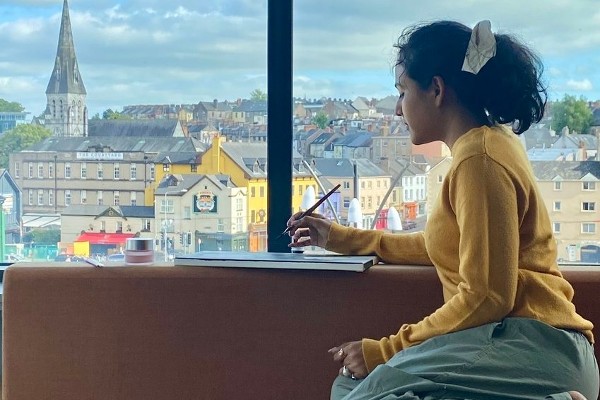
Sometimes it’s not what’s on our CVs or our academic qualifications that gives us that certain X Factor which propels us to success. Often it’s simply the ability to adapt, grow and have the confidence to challenge ourselves to step outside our comfort zones.
Tyndall’s goal is to attract and nurture people with diverse talents and excellent skills, enabling all to reach their full potential.
In celebration of the many talents that make up Tyndall, we are showcasing Hidden Talent and Artist: Debismita Dutta, PhD Student, in Micro Nano Systems, Advanced Materials and Surfaces Group.

What is your hidden talent?
I am an artist and I love anything that forces me to be creative – art being one such thing. I started painting when I was a kid and have been doing it ever since. In the past few years, I have been featured in international art and literature magazines as well as produced artwork for films. My work has travelled to the US, Cambodia, as well as various parts of India. I am interested in surrealism and primarily work with acrylics and watercolours.
What sparked your interest?
I have always loved creative exercises as a child. From scribbling on benches, to painting anything and everything I can think of (though they weren’t very good back then). My parents used to let me tape my paintings on my wall as a kid and I didn’t stop until you couldn’t see the paint anymore. I learnt that being expressive is always worth it, even if that means your landlord will never return your deposit.
What is your current role?
I am a PhD Student supervised by Dr. Lynette Keeney and Dr. Michael Nolan. I primarily work on multiferroic thin films for data storage devices , aiming to reduce their thickness to sub-unit cell. This enables electrons to successfully tunnel through them, making it a multiferroic tunnel junction device.
How has your hidden talent complemented your role and/or enhanced your research?
Creativity is a lateral skill which can be applied to anything, especially research. Contrary to popular belief, I don’t think it is an intrinsic ‘gift’. I think of it as a muscle that needs to be trained. Art trains this muscle which can perform research and vice versa. Art also gives me a lovely escape from the stress of a bad experiment day, and so I can return to lab afterwards with new vigour.
What advice would you give to someone who wants to try your hidden talent?
When trying something for the first time, it is normal to feel as if everyone is better than you. However, what differentiates their skill from yours is not intrinsic ‘talent’ but rather repetition. The more you are interested in something, the more you will do it. And the more you do it, the better you will get at it. So, it is not a question of ‘if’ you will be great at this, but rather it is ‘when’.
